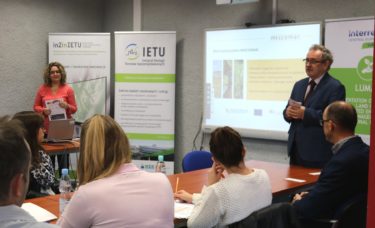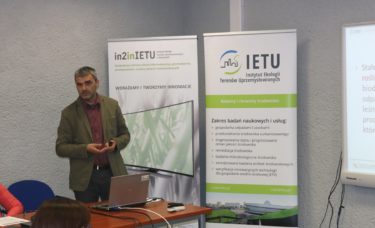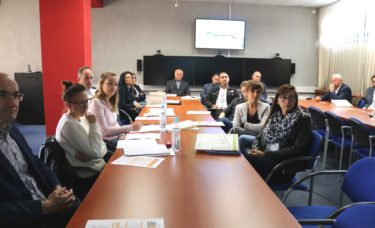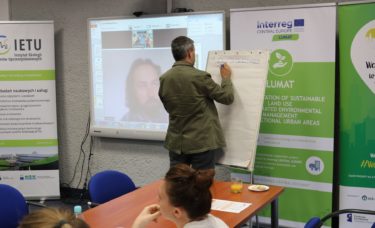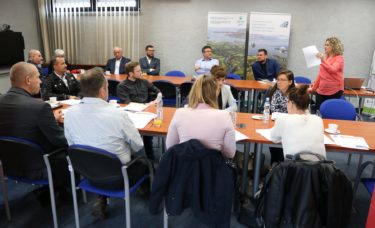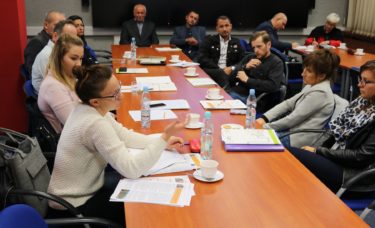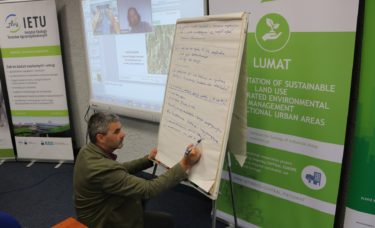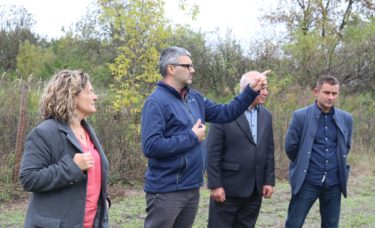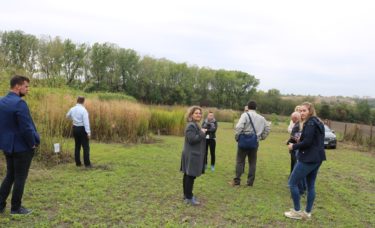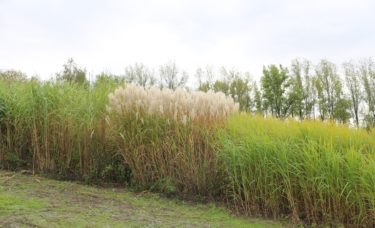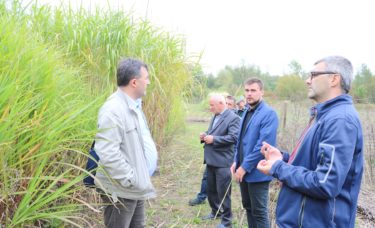
Why is it worth cultivating energy plants on soils contaminated with heavy metals?
On the 27 of September 2018 at the Institute for Ecology of Industrial Areas scientists and practitioners discussed the possibilities of growing energy crops on soils contaminated with lead, cadmium and zinc and on post-industrial wastelands. The workshops took place as part of the MISCOMAR project.
The cultivation of energy crops can become an environmentally and economically viable alternative to the management of poor soils contaminated with heavy metals and post-industrial wastelands. Some of the energy plants have specific mechanisms that allow the collection and accumulation of toxic substances (such as lead, cadmium or zinc) in tissues, which means that they can also be used for soil remediation. Other species take up contaminants from soil and accumulate them only in underground parts, so their yield is pure biomass, which can be easily developed for energy purposes. To use this potential is worth trying, the more that in Poland until 2020 the share of renewable sources in the final gross energy consumption should amount to 15%.
The workshop was organised as part of the project: Miscanthus Biomass Options for Contaminated and Marginal Land: quality, quantity and soil interactions - MISCOMAR. Research conducted under this project at IETU - Poland, University of Aberystwyth - Great Britain and University of Hohenheim - Germany confirms the phytoremediation potential of the Miscanthus giganteus and the new seed genotypes of Miscanthus sp. as well as the benefits of processing their biomass for energy purposes.
Sustainable production of biofuels and food production requires development of new methods of growing energy crops on poor quality agricultural land, while leaving clean and good quality soils for food production. During the workshops, we presented the results of our latest studies on the cultivation of new Miscanthus seed genotypes on marginal soils and the impact of cultivation on the improvement of soil structure and quality, which are carried out with partners from Germany and Great Britain. Research is conducted on experimental plots in Bytom on agricultural lands contaminated with heavy metals; in Germany, in the Unterer Lindenhof on loamy soil, periodically flooded and in Great Britain, in Lincolnshire on barren soil, intensively used in the past.
The selection of the appropriate species of energy plants allows achieving the assumed goals, such as: restoring the soil contaminated with heavy metals and improving the structure and quality of soil, as well as obtaining a high biomass yield with good parameters for processing for energy purposes.
Dr. Michał Moś from Energene presented practical aspects of establishing plantations and growing Miscanthus. He has emphasised that the cultivation of Miscanthus provides soil protection, i.e. prevents soil erosion and spreading of pollutants and improves its quality.
During the discussion, it was emphasised that the introduction of energy crops to marginal soils requires appropriate legal and economic support as well as infrastructure for biomass processing. Practitioners claim that as soon as the demand for Miscanthus biomass appears on the market, there will also appear those who will be ready to grow it.
The workshop included a visit to the IETU testing plot in Bytom. We showed a four-year experimental plantation of innovative Miscanthus genotypes obtained from seeds and Miscanthus giganteus, cultivated on soil contaminated with heavy metals - adds Dr. Jacek Krzyżak.
On the testing plot the visitors could also see other species of energy plants, including Sida hermaphrodita, Panicum virgatum L. or Spartina pectinata.
During the visit to the plots we had an opportunity to present our experience in establishing plantations, soil requirements and care treatments. Information about the height and quality of Miscanthus grown on soil contaminated with lead, cadmium and zinc met with great interest. It is important that the biomass yield should be as high as possible at the relatively low content of accumulated metals. Then, the biomass can be converted into energy in an environmentally-friendly way, e.g. by gasification or anaerobic digestion - continues Dr. M. Pogrzeba.
More information about MISCOMAR project: www.miscomar.eu
Miscanthus giganteus
- perennial grass, originating from East Asia
- natural hybrid of Miscanthus sinensis and tetraploid Miscanthus sacchariflorus
- sterile - does not produce seeds by generative propagation; perennial plant with C4 photosynthesis cycle, characterised by increased CO2 absorption
- relatively high calorific value in comparison to conventional fuels, perennial energy grass (lignin 10-15%, cellulose 45-55%, hemicellulose 30-35%)
- low soil requirements; it tolerates weak, sandy and contaminated soils, of acid to neutral reaction
- multiplied by the division of rhizomes (20 000 plants / ha)
- resistance to diseases, pests and frost
- easy to grow and harvest
- crop harvested every year from the 2nd year of cultivation
- dry matter yield up to 25-30 t dw/ha
- the plantation can be used for 10-15 years
- phytoremediation properties










